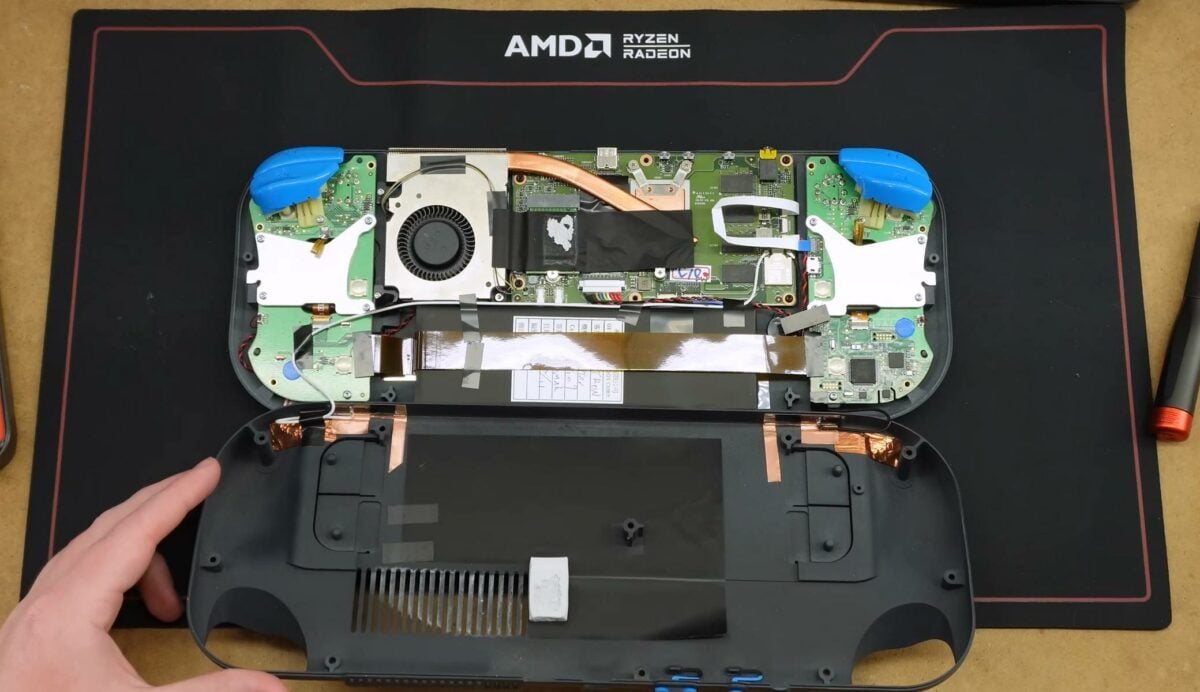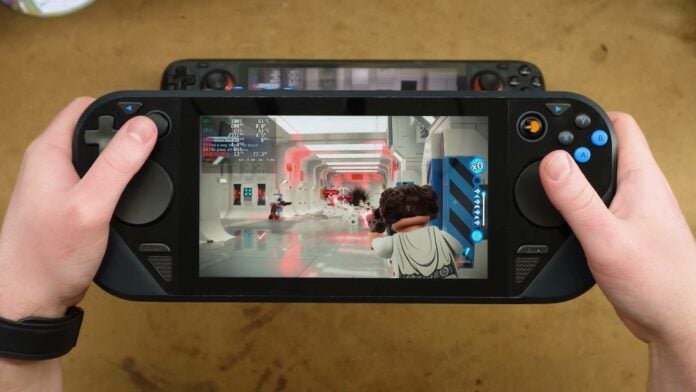A few months following its sale on eBay, the Steam Deck prototype has emerged once again. The device has found its way into the hands of someone unafraid of exploring what’s going on underneath. Having opened and tested the $3,000 handheld, it demonstrates some radical departures from Valve’s retail iteration.
Internet personality and VR expert SadlyItsBradley, sent their Steam Deck prototype to Bringus Studios who took charge of the deep dive. The YouTube channel highlights the numerous design differences between the two systems, including the welcome shift away from reusing Valve Index thumbsticks and HTC Vive-style touchpads. Other changes include different curvatures, but the handheld’s general layout is broadly similar.
Removing the backplate nets more interesting discoveries. In place of the blend of Zen 2 and RDNA 2 architectures found in Steam Deck’s Aerith and Sephiroth APUs, this prototype uses a less-powerful AMD Ryzen 7 3700U. That leaves the device with just four Zen+ cores, eight threads, and a Radeon Vega 10 iGPU. Naturally, it’s pleasing that Valve settled on a more powerful configuration, even if it’s behind the likes of ROG Ally X. RAM capacity is also much smaller relative to retail Steam Deck, falling from 16GB to just 8GB. However, this is only 6GB in real-terms as the system reserves 2GB for the iGPU.
The most intriguing part of the prototype’s setup, though, is support for discrete GPUs. While this could ultimately mean little more than compatibility with external solutions, it’s entirely possible that Valve considered installing dedicated graphics in the Steam Deck. Such a move would have provided more rendering horsepower to the handheld, but would’ve come at the price of power consumption. Perhaps a combination of APU and GPU would’ve been the goal, allowing you to switch between the two.

To Bringus Studios’ surprise, the prototype booted into an early version of SteamOS. However, to test the performance of the device they instead installed a more-recent version on a separate SSD.
The differences between the silicon of prototype and retail Steam Deck are easy to spot, with the final design delivering more than double the other’s frame rate. RAM is a common issue on the older model, given its low capacity.
It’s intriguing to see how Valve iterated on its Steam Deck design, and it’s clear the brand’s changes were for the better. Here’s hoping we see a similar prototype for Steam Deck 2 emerge in the future.


